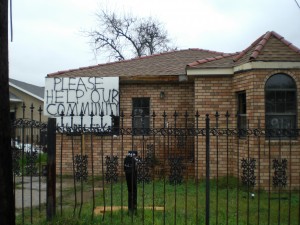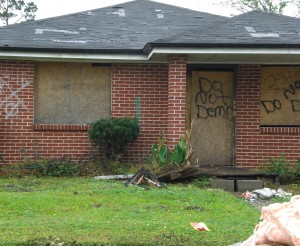Marie Hunter
Staff Reporter
Aug. 29th marks the fourth anniversary of Hurricane Katrina, the catastrophic storm that breached the well-known levees, leaving 80 percent of New Orleans underwater and killing more than 1,800 people–the deadliest U.S. hurricane since 1929.

A plea for help in New Orleans
For many McDaniel seniors, this date marks their long-ago first week as freshmen. For 13,000 New Orleans families who are still displaced or living in inadequate housing, it’s a painful memory they live with daily.
Much of the Lower Ninth ward is still empty, and the only remnants of the formerly full neighborhoods are slabs of foundation or porch steps. Even the areas of New Orleans that have been revived show signs of old damage; too many buildings are still boarded up with the tell-tale spray painted ‘X’s. These are the reminders people walk past going to work every day.
For me, New Orleans still means beignets and Cajun music, po’ boys and people calling you “Dawlin’.” That energy is still vibrant in people you meet, even after enduring such hardships. After spending a week there last spring, the people of the Crescent City and their misfortunes got under my skin. Their gratitude and hospitality, as well as seeing how much is still needed, is what is making me and other volunteers eager to go back.

One of the many homes left unattended
I worked with the Saint Bernard Project rebuilding houses and had the good fortune to be there as they finished their 200th house. Their lofty goal for 2009-2010 is to rebuild five times that amount. Liz McCartney, co-founder of SBP and CNN’s 2008 Hero of the Year, stated “we need to…rebuild as efficiently and affordably as we can, because the clock is ticking…on people’s mental health, the ability to have hope.”
Take a minute to think about how your surroundings have changed in four years, and then realize that people in New Orleans are still waiting to go home.
